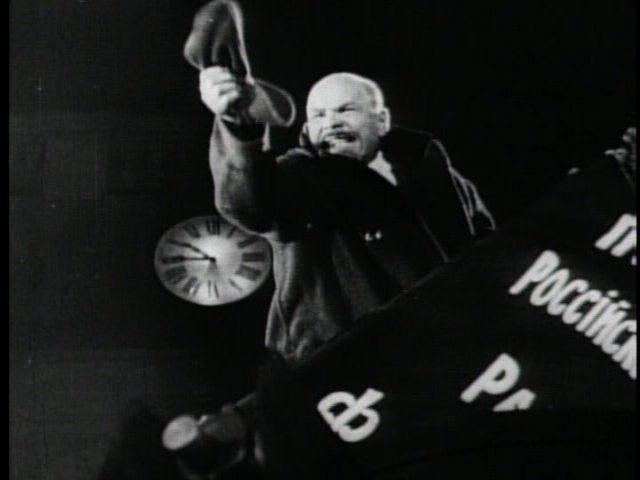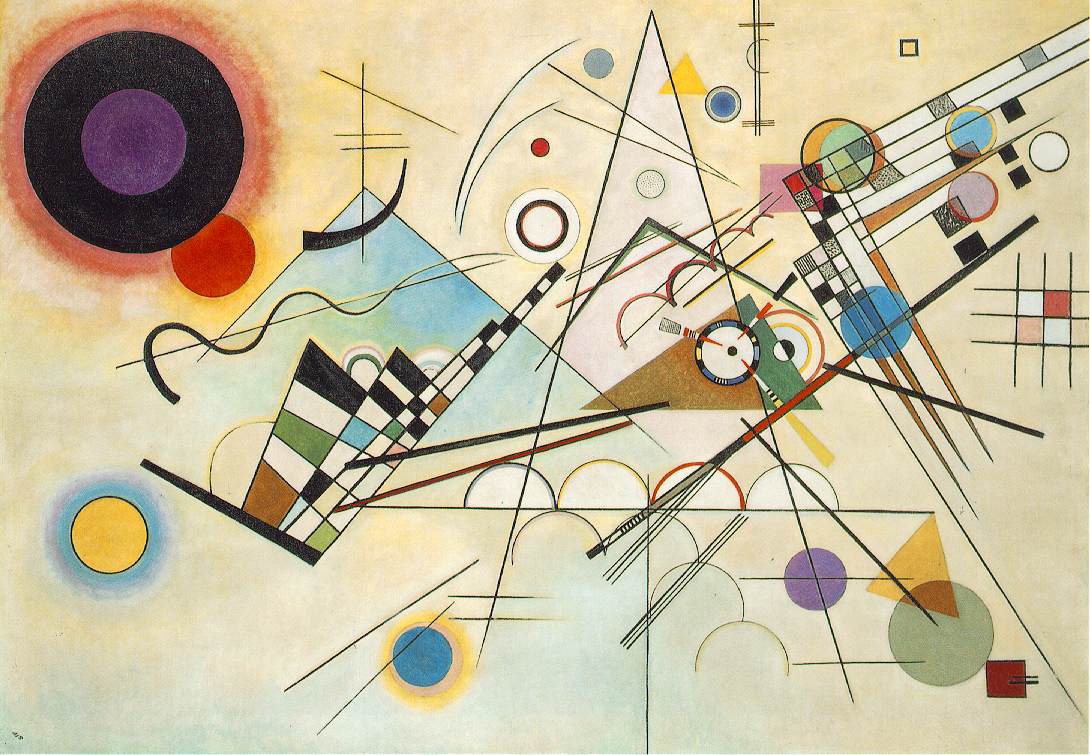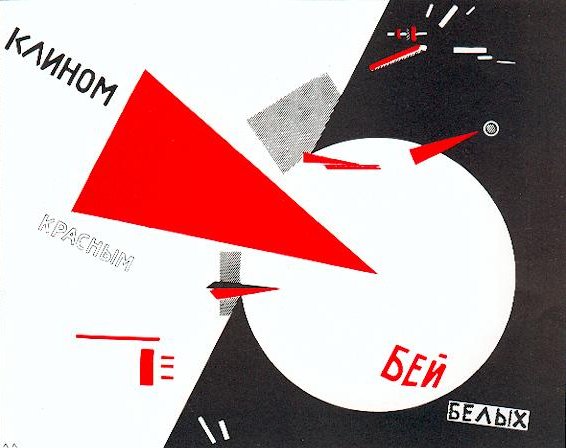The centenary of the Russian Revolution has opened in an appropriately explosive fashion, with Donald Trump’s first raft of vile executive orders provoking international protest on a gargantuan scale. It is fair to say that tensions are high, and widespread anger is the order of the day.
However, all of this rage pales into insignificance next to the righteous fury of a lone Guardian art critic, whose response to a London-based showcase of paintings from Russia’s revolutionary period makes the past weeks’ anti-Trump protests look positively sanguine by comparison.
Even by the dubious standards of petty-bourgeois art criticism, Jonathan Jones’ spittle-flecked tirade against the Royal Academy of Arts’ exhibition of Russian Art from the period 1917-32 is distinguished by a hysteria that borders on the comical.
“It is a lazy, immoral lie to keep pretending there was anything glorious about the brutal experiment Lenin imposed on Russia,” Jones opines. “Or anything innocent about its all-too-brilliant propaganda art.”
Calm down dear, they’re only paintings.
According to the RA’s website, the upcoming exhibition (which opens on Feb 11) will commemorate the centenary with a celebration of renowned Russian artists such as Victor Kandinsky, Kazimir Malevich, Marc Chagall and Alexander Rodchenko, whose works were forged in the fires of revolution.
“Amidst the tumult, the arts initially thrived as debates swirled over what form a new ‘people’s’ art should take,” the RA website’s description reads. “But the optimism was not to last: by the end of 1932, Stalin’s brutal suppression had drawn the curtain down on creative freedom.”
Credit it where it is due, for a chartered gallery of the most bourgeois kind, this is an apt summary.
The triumphant period in the immediate aftermath of 1917 was one of huge cultural optimism. Prior to 1917, art and culture were strictly the domain of the elite, much of it locked away in grand art galleries: ‘concentration camps of the mind’, as Trotsky said. Meanwhile, experiencing the musical genius of Modest Mussorgsky or Pyotr Tchaikovsky in concert could set the average worker back a month’s wages.
After the October Revolution, the Bolsheviks brought an immediate end to the bourgeois and aristocratic monopoly on the arts. The gilded doors of Russia’s galleries were flung open to the masses, displaying Russia’s rich artistic heritage (much of it expropriated from private collections) to workers and peasants for the first time.
Meanwhile, radical artists were inspired to locate a style worthy of the new world, pushing the boundaries of every medium: from painting, to cinema, to music, to poetry and architecture. Just as the early period of revolution was marked by giants of the political stage, so too did it produce cultural colossi like Sergei Eisenstein, Vladimir Tatlin and others.
 Lenin in Eisenstein's October - Photo: Fair Use/Wikipedia.orgEisenstein’s contributions to cinema are acclaimed internationally to this day, particularly his innovation of ‘dialectical montage’, which applies dialectical principles to the cinematic editing process by bringing opposing images crashing together for emotional effect.
Lenin in Eisenstein's October - Photo: Fair Use/Wikipedia.orgEisenstein’s contributions to cinema are acclaimed internationally to this day, particularly his innovation of ‘dialectical montage’, which applies dialectical principles to the cinematic editing process by bringing opposing images crashing together for emotional effect.
For example, in Eisenstein’s masterpiece Battleship Potemkin, the audience is shown images of gaunt Kronstadt Sailors intercut with shots of rotten, maggot-ridden rations, to demonstrate elegantly the sailors’ appalling living conditions.
Meanwhile, Tatlin was an important figure in the Constructivist movement, whose striking design for a Monument to the Third International (which he envisioned as dwarfing the Eiffel Tower) is considered a marvel of architectural ambition, that was sadly never built.
The RA exhibition is apparently inspired by one of the last major Russian exhibitions before Stalin’s culture minister Andrei Zhdanov tightened the screws on creative expression, limiting all art to the ‘approved’ style of ‘Soviet Realism.’
Zhdanov’s bland cocktail of the Realist tradition, mixed with blithe praise for the Stalinist regime is perhaps deserving of Jones’ slander. Soviet Realism was based on the condescending principle and that the Russian masses would not understand work that was too ‘difficult’, and thus eschewed formal experimentation as ‘bourgeois’.
Soviet Realism also required that all art sing the praises of state. Any perceived criticism of Stalin’s regime was strictly censored and artists were expected to portray the Russian workers and peasants striding optimistically towards a bright, communist future: while in reality they starved in famines brought about by Stalinist mismanagement of the planned economy.
All the great artists listed in this article fell out of favour with the regime during the period of Thermidorian counterrevolution. Under Zhdanov, dozens of innovative abstract and experimental creatives who strove find a new artistic idiom befitting the new workers’ state suddenly had their work labelled ‘bourgeois’ and ‘formalist’. Many were exiled, imprisoned, or worse - a fact that Mr Jones overlooks.
 Composition 8, huile sur toile by Kandinsky - Photo: Public DomainThe exhibition will encompass a treasure-trove of masterpieces, from the vibrant abstract compositions of Kandinsky and Malevich to film installations displaying the pioneering work of Eisenstein and Dziga Vertov. For any art lover this will be unmissable.
Composition 8, huile sur toile by Kandinsky - Photo: Public DomainThe exhibition will encompass a treasure-trove of masterpieces, from the vibrant abstract compositions of Kandinsky and Malevich to film installations displaying the pioneering work of Eisenstein and Dziga Vertov. For any art lover this will be unmissable.
But despite penning columns for Britain’s foremost ‘lefty’ paper, Mr Jones is clearly less than impressed. His article bristles with moral outrage that venerable institution like the RA should have the temerity to house “utopian projects from an age of struggle and violence”.
He goes on to castigate “[t]he way we glibly admire Russian art from the age of Lenin sentimentalises one of the most murderous chapters in human history.”
A pretty damning assessment, made all the more striking for the fact that the exhibition doesn’t even open for another week. Apparently an open mind is not a virtue becoming of the cultural literati these days.
Mr Jones’ hostility is predicated on the so-called ‘horseshoe’ argument.The crux of this fallacy (favoured by mindless liberals everywhere) is that ‘extreme’ ideologies of the right and left are essentially indistinguishable when they are enacted on the political stage:
“The Royal Academy is showcasing Russian art from the age of Lenin, but we must not overlook that his regime’s totalitarian violence rivalled Nazism… If [they] put on a huge exhibition of art from Hitler’s Germany there would rightly be an outcry. Yet the art of the Russian revolution is just as mired in the mass slaughters of the 20th century.”
In Jones’ classic conception of the political horseshoe, Hitler’s regime in Germany was brutal and killed millions, as was the Soviet Union. Ergo, Nazism and socialism (at least of the revolutionary variety) must be basically the same. To celebrate the Russian Revolution’s art is thus to celebrate mass murder.
Not content with that, Jones argues that the October Revolution and Bolshevik rule in Russia were a sort of ‘dry run’ for Nazism. He speaks of the Bolshevik “coup” against Alexander Kerensky’s Provisional Government, and the brutal, totalitarian tactics Lenin employed to consolidate power:
“Lenin’s Bolsheviks used torture, surveillance and executions to build a one-party state. Rural society was destroyed by the Bolshevik campaign against ‘kulaks’, meaning so-called capitalist peasants – a war on an unreal social enemy that anticipated Nazism by demonising an entire category of people.”
Should Mr Jones bother to pay the exhibition a visit when it opens, one can only hope that the RA gift shop will stock a few books on Russian history ‒ he could certainly benefit from cracking one open.
In February 1917, the Russian people - impoverished, hungry and tired of the Tsar’s imperialist war - overthrew the reactionary Tsarist regime, events in which Lenin and the Bolsheviks played a minor role.
But having deposed Nicholas II, a close ally of Mr Jones’ native kingdom, the masses soon realised that power had only been transferred to another clique which was bound by the same interests as the Tsar’s. The Kerensky government was thus roundly despised by the Russian population for keeping up the war effort which had cost millions of lives and left millions more in poverty.
The alternative posed by the Lenin and the Bolsheviks was: “Don’t trust the professional politicians and the parasitic rulers. Trust only in your own forces, take power in your own hands.” Thus, the regime that the Bolsheviks established after the October revolution was the most democratic in history, under which for the first time the exploited classes had a direct say over their destinies.
The proof came after Russia was attacked by twenty-one reactionary White armies, many enjoying the support of Great Britain, after the revolution. The Bolshevik party, having limited resources and no army or proper state infrastructure to rely on managed to beat back the Whites by appealing to the Russian masses - and to the rank-and-file invaders.
Many of these foreign soldiers, such as oppressed Indian soldiers fighting on behalf Britain, were ultimately to join the Bolsheviks and turn their arms against their own domestic and colonial rulers.
“The kulaks”, for their part, were a reactionary caste of wealthy peasants ‒ “bloodsuckers, vampires, plunderers of the people and profiteers, who fatten on famine” as Lenin put it. These traitors threatened the entire revolution and held the impoverished and hunger-stricken population hostage, by refusing to relinquish their surplus grain to feed the cities and Red Army during the Civil War, preferring to sell it for profit while the workers starved.
Nevertheless, even while there were forced expropriations of the kulaks under the Bolsheviks and some were executed after a revolt in 1918, they were not terrorised as a group until 1929, well after Lenin’s death and Stalin’s rise to power.
Mr Jones has little time for the Trotskyist contention that the atrocities committed by the USSR were Stalinist distortions: “To see Lenin’s revolution through rosy spectacles as a Good Thing, a ‘utopian’ dream that only went wrong because the wicked Stalin spoiled it all, is to believe in fairy tales.”
And yet virtually all of the crimes Mr Jones cites ‒ forced collectivisation, the famines of the 1930s, the death toll incurred by the Civil War ‒ either took place under Stalin’s orders or were enacted by the pro-Tsarist Whites, backed by the armies of imperialist nations.
In fact, the October Revolution itself was almost entirely bloodless. According to one appropriate anecdote, more people died accidentally filming a scene in Eisenstein’s October in which workers storm the Winter Palace, than died during the actual storming of the Winter Palace. Since you mentioned fairy-tales, Mr Jones, Pinocchio springs to mind.
 Beat the Whites with the Red Wedge by El Lissitzky - Photo: Public DomainIn a particularly nonsensical diatribe against Bolshevik ‘propaganda’, Mr Jones singles out for scorn El Lissitzky’s famous 1919 poster ‘Beat the Whites with the Red Wedge.’ In this brilliant piece of abstract art, the Red Army’s heroic struggle against Tsarist counterrevolution is boiled down to a few, bold, geometric shapes.
Beat the Whites with the Red Wedge by El Lissitzky - Photo: Public DomainIn a particularly nonsensical diatribe against Bolshevik ‘propaganda’, Mr Jones singles out for scorn El Lissitzky’s famous 1919 poster ‘Beat the Whites with the Red Wedge.’ In this brilliant piece of abstract art, the Red Army’s heroic struggle against Tsarist counterrevolution is boiled down to a few, bold, geometric shapes.
“Nauseatingly,” Jones writes, “we forget that reality when we celebrate El Lissitzky’s poster in an apolitical way or, even worse, admire it as radical chic without asking any questions about what it really represents. It is a call to merciless violence ‒ we need to place it in its true context.”
Alright, sir, well how is this for context? Lissintzky was also responsible for ingenuous propaganda posters during the Second World War, rallying the Russian people to build tanks to oppose the onslaught of Nazism. But of course, communism and Nazism are the same – because horseshoe.
Either Mr Jones has no idea what actually happened in Russia, or he reveals his true colors here. While the art critic mentions nothing about the acts of barbarism carried out by the pro-Tsarist White armies - who enjoyed no support amongst the Russian people - he aims his critique against a struggle for liberty, organised under the most difficult conditions, with virtually no resources, by the heroic Russian masses.
To oppose the fight against the White armies on the grounds of being “anti-violence” is to oppose a struggle against fascist counter-revolution. It is akin to opposing the fight against Franco by the Spanish masses, or the resistance against Hitler and Mussolini.
Tellingly, this same critic is perfectly happy to praise the art produced in murderous, fanatically religious states during the Spanish Inquisition: “[T]he truth is that brutal regimes and empires have long contributed to a legacy of eye-popping realism in religious painting and sculpture.” So, the art of brutality is fine, as long as it is not made by communists.
Lissintzky’s art is a reflection of this life or death struggle fought by the Russian masses. Mr Jones’ critique only reveals that the idea of impartiality in art is as impotent as the idea of impartiality in the class struggle.
In fact, in spite of his moralistic opposition to ‘propaganda,’ Mr Jones’ article is a classic example of the kind of rabid, anti-communist propagandising that would not have gone amiss in the pages of the New York Post at the height of the Cold War.
Moreover, Mr Jones’ sneering dismissal of ‘radical chic’ underscores an unsubtle pop at ‘idealistic’ young people who may – perish the thought – be inspired by the legacy of the Bolshevik Party and its heroic struggle to liberate the working class.
Perhaps he belies a little fear at the thought that the brilliant works of art coming to the RA in might inspire a new generation of radicals, for whom capitalism has brought nothing but debt, unemployment and Donald Trump.
“The title of this exhibition that starts the centenary of 1917 goes right for the commercial jugular – every young idealist in the country will be clamouring for a ticket.” On that much, Mr Jones, we agree.
